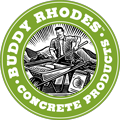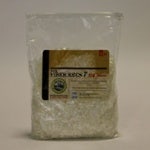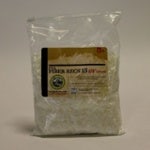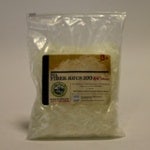What Are PVA Fibers?
The majority of artisan concrete projects, including concrete countertops, architectural panels, concrete vanities, and concrete furniture pieces often achieve their primary reinforcement using fiber technology. Understanding which fibers are functional as primary reinforcement, and the reasoning behind which fiber to use in a given situation, is helpful in achieving a well reinforced object.
Three of the reinforcing fibers that are the most widely used are Alkali Resistant (AR) Glass Fibers, PVA Fibers, and AC50 Acrylic Fibers. There are many other fibers that are available, including nylon and polypropylene, but these are typically used for shrinkage control and secondary reinforcement, not as a primary reinforcement. For now we will focus on the benefits and drawbacks of using PVA Fibers.
What Are PVA Fibers?
PVA (Polyvinyl alcohol) fibers are monofilament fibers that disperse throughout the concrete matrix, creating a multi-directional fiber network, providing shrinkage control, abrasion resistance, and protection from thermal expansion and contraction. When used at certain loading rates, PVA Fibers can be used as primary reinforcement.
Since PVA fibers are monofilament fibers, as opposed to a bundle fiber like AR Glass Fiber, the fibers disperse throughout the concrete matrix with minimal visibility in the finished object. They are often referred to as 'stealth fibers', due to their minimal visibility in finished objects.
PVA FIBERS ARE IDENTIFIED WITH A SIZING AND DENIER REFERENCE, FOR INSTANCE-
"PVA RECS 15"
- The sizing reference, in this case "RECS", describes the 'coating' that is applied on the fiber. Fibers are produced as RECS and RSC, the primary difference being that the RECS sizing creates a fiber that more freely disperses in the concrete mix, particularly at higher dosage rates. The RECS is less prone to clumping and choking concrete during the mixing process, and also produces a more flexible fiber in the cured concrete. RECS is a more expensive fiber, compared to the RSC, due to these added values.
- The number reference, in this case "15", designates the denier, or diameter, of the fiber. The smaller the denier, the less visible the fiber will be in the finished surface. Also, the smaller the denier, the more surface area is added per lb of fiber, these are important notes for designing mixes with these fibers that will be addressed shortly.
- The lengths of the fiber are not shown in the reference, but typically PVA7 are 1/4", PVA15 are 3/8", and PVA100 are 1/2" long. The shorter the fiber, the more individual fibers there will be per lb of fiber. Shorter fibers produce greater impact resistance (micro reinforcement) due to the greater number of fibers per lb. Longer fibers produce better tensile strength (macro reinforcement).
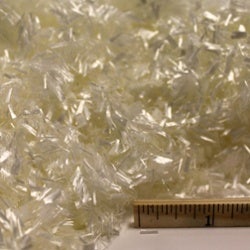
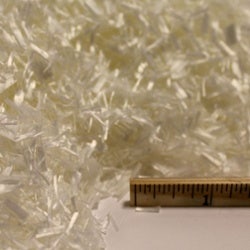
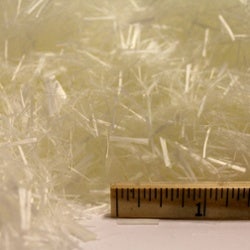
When Should PVA Fibers Be Used?
Benefits-
- The primary benefit of PVA Fibers is their 'stealth' nature. They can be cast throughout the concrete, with minimal to no visibility in the finished surfaces. This is true whether you are creating mold cast concrete, or troweled finished concrete.
- PVA reinforced concrete is tremendously ductile, or flexible. The concrete part will bend considerably before it breaks, as opposed to experiencing sudden catastrophic failure. This does not mean that it is stronger than AR Glass fiber in application, it just fails differently. In comparative testing, AR Glass provides greater strengths, but is not always practical for use in a given application.
- PVA's are purported as 'chemically bonding' with concrete. To common observation, this seems a dubious claim. We will just let that claim rest, and not give it a huge amount of weight. If it is true, then we win. If not, then we won't be concerned.
Drawbacks-
- The primary drawback, just like most things in nature, the benefit is also the source of the complication. Because PVA fibers are a monofilament fiber, the fibers disperse throughout the mix. This dispersion of a fiber matrix makes the mixing process more complicated at higher dosage rates. In order to achieve the loading rate required to reinforce certain objects, many considerations must be taken during the mix design process, as well as the mixing process, to ensure a successful result.
- PVA Fibers are more expensive than alternate options. This is offset to an extent since the loading rates are lower than with other fibers, but it is an issue none the less.
Considerations-
- The stealth nature of the fibers is in direct correlation to the denier of the fiber, coupled with the overall loading rate.
- The smaller the denier of the fiber, the greater the surface area and overall number of fibers it will add to the mix.
- PVA Fibers can be added in combination with other fibers, or with steel reinforcement, adding unique benefits within a composite.
- If you want a mix that is more flowable, then adding the larger PVA 100's will introduce less surface area and a less dense fiber matrix, allowing the mix to move more freely.
- If being used primarily for impact resistance in finished surfaces, the smaller denier fibers will be less visible. This is particularly true in GFRC mist coats.
Dosage-
Dosages rates of PVA Fibers vary heavily depending on the application and desired outcome. Dosage can range from 0.1% to 2%.
Note- All dosage rates are based on the weight of the total mix. (Dry Mix + Liquid) x Dosage Rate
Every situation is different. If you are not certain about whether an application is appropriate, you can share your concerns and receive feedback by filling out this form.
Craftsman Mix and Countertop Mix- PVA Fibers can add beneficial qualities for all of the various recipes and techniques commonly associated with the Craftsman Mix and Countertop Mix.
- Press Finish :: Ideal for use in the initial press layer. Best to be followed with a structural mix utilizing glass fiber. Dosage- 0.2-0.5% PVA7 or PVA15
- Troweled Finish :: Ideal in the finished trowel surface. Best to be preceded with a structural mix utilizing glass fiber. Dosage- 0.2-0.5% PVA7 or PVA15
- Cast Finish :: Can be used as a secondary reinforcement. Dosage- 0.2-1% PVA15 or PVA100. Can be used in certain applications as primary reinforcement. Dosage- 1-1.2%PVA15 or PVA100. Test mixing is recommended at dosage rates greater than 1%
GFRC Blended Mix- PVA fibers are great for adding impact resistance in mist coats, can be used in combination with Glass Fiber in backer coats, and can be used in SCC Mixes as a primary reinforcement.
- Mist Coat :: To improve impact resistance and reduce shrinkage. Dosage- 0.2% PVA7 or PVA15 (PVA7 are easier to spray)
- Backer Mix :: Used in combination with a standard glass fiber loading for added ductility. Dosage- 0.2% PVA15
- SCC :: Can be used in certain applications as primary reinforcement. Dosage- 1-1.2% PVA15 or PVA100. Test mixing is recommended at dosage rates greater than 1%
- Sculpting Mixes :: Rates depend on application and aesthetic requirements
ECC Blended Mix- These mixes are designed specifically to utilize high loadings of PVA fibers as means for primary reinforcement. You can find recipes for various ECC concrete blends in our Catalog of Products and Techniques. Each mix has a specific blend of PVA Fibers designed to reach a very specific work-ability and strength. This mix is incredibly versatile, in a large part because of the utilization of PVA Fibers. Our ECC mixes are often carved, twisted for unique marbling, and heavily processed for decorative aggregate exposure. See the picture below for a sense of the flexibility of these mixes.
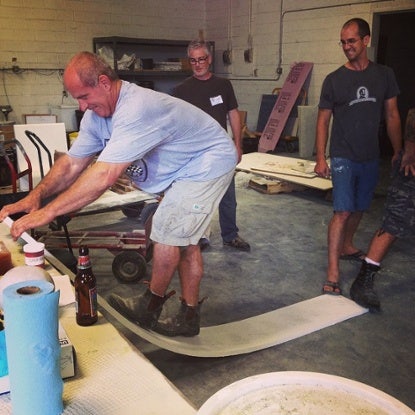
Choose from our selection of PVA Fibers



